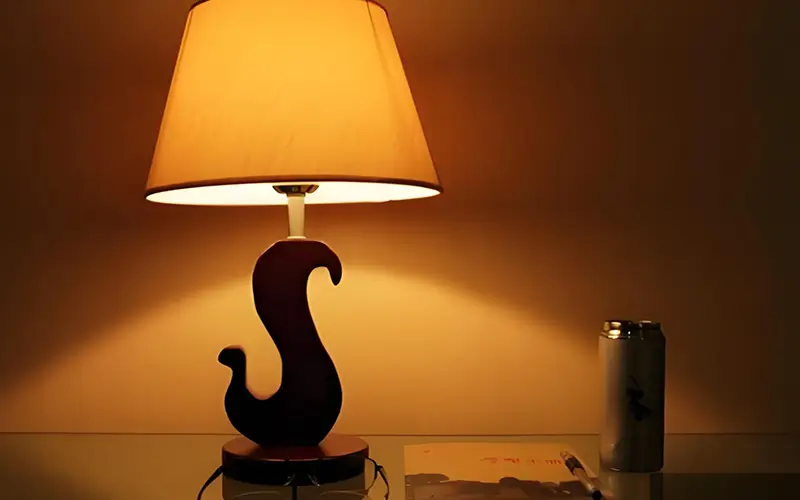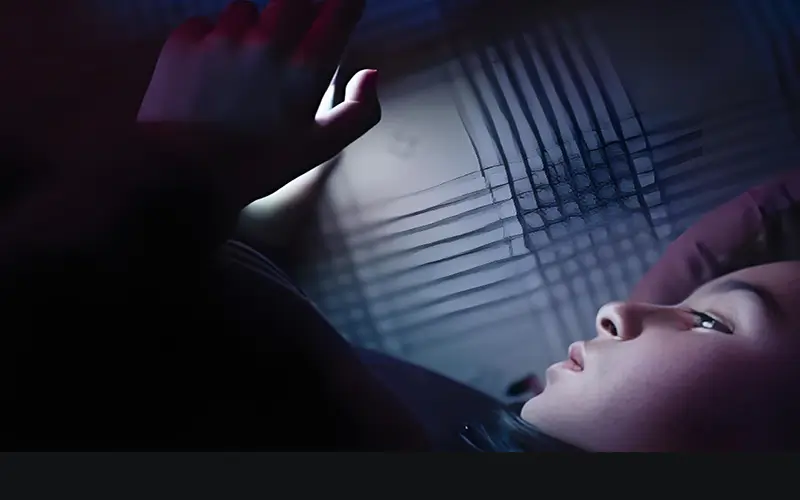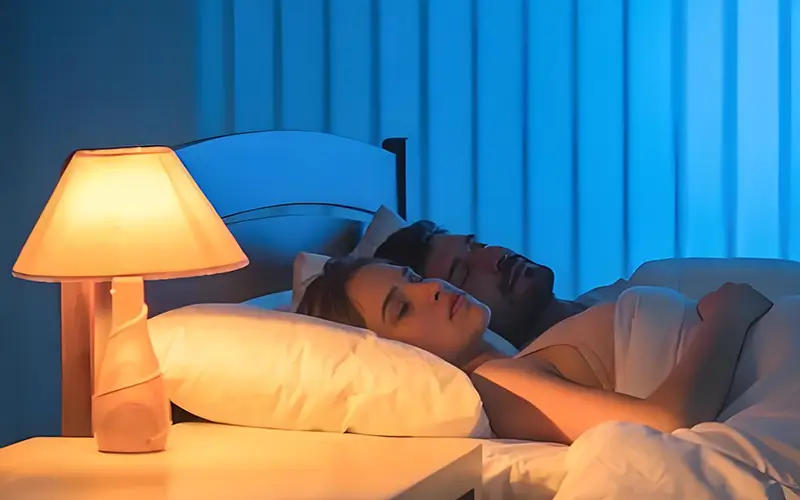
With the continuous development and innovation of LED lights, artificial lighting plays an important role in our daily life. Artificial lighting can be found everywhere, especially at night. However, does artificial lighting have an impact on our eyes and health? Not all lights are suitable for night use. On the contrary, inappropriate ambient light sources can easily cause eye fatigue or damage. This article explores the light color that are best for the eyes at night to help you make an informed decision.
Understanding the Impact of Light on Eye Health
Different colors of light have different wavelengths. The human eye is sensitive to different wavelengths of light, which can affect our vision and overall health. Light exposure, especially at night, can affect everything from eye strain to circadian rhythms. The type of light you use can protect your eyes or cause discomfort and long-term damage.
The impact of natural light
First, it is mentioned that natural light, especially sunlight during the day, has a positive impact on eye health. It helps regulate the body’s circadian rhythm (also known as the biological clock), thereby maintaining a healthy sleep and wake pattern.
We all need moderate exposure to natural light to reduce eye fatigue and help the eyes maintain normal function.
Effects of Blue Light
Blue light is high-energy visible light with a shorter wavelength. Its main sources include sunlight, LED screens, mobile phones, computers, etc. We should spend less time looking at these electronic devices at night, as excessive exposure to blue color light may have adverse effects on eyes health, especially at night.

The impact of UV rays
Ultraviolet rays (UV light) have a significant negative impact on the eyes. If you are exposed to UV rays for a long time, it may cause a variety of eye problems. So don’t stay in strong sunlight for a long time, such as the sun reflecting off the snow. Therefore, it is very important to wear UV-blocking sunglasses when you are outdoors.
Effects of low light
Working or reading in a dimly lit environment for a long time may cause your eyes to overstrain. So be sure to maintain good lighting, as good lighting conditions help keep your eyes healthy and reduce unnecessary eye stress.
Effects of insufficient light
Studies have shown that children’s vision is affected to a certain extent when they are exposed to insufficient light. In particular, long periods of indoor activities may increase the risk of myopia. In contrast, increasing outdoor activity time and exposure to natural light can help reduce the incidence of myopia.
The impact of full-spectrum light
Full-spectrum light sources are very close to natural light, can reproduce colors more realistically, and reduce eye fatigue. Using full-spectrum light lighting, such as when working or reading, can improve visual comfort and help eye health.
Which Color of Light are the Worst for Sleep?
Sleep problems are common to most people today, due to long-term work stress and influence. So, we should choose some colors that have a good effect on sleep. Certain colors of light can disrupt sleep patterns more than others.
Blue light, which is often emitted by electronic screens and some LED lights, has been shown to interfere with the production of melatonin, a hormone that is essential for sleep. White light and cold light also contain blue wavelengths, so they are not suitable for use at night.
Which Color Light is Best for Eyes Nighttime Use?
Red light is often recommended as the best color light for eyes to use at night. It has a longer wavelength, a warm and soothing color, and does not significantly affect melatonin levels. Red light has a lower color temperature than regular daylight, making it ideal for sleep.
Because red light has a lower color temperature, our brains are less reactive to its wavelength, helping us relax and prepare for sleep without causing eye strain or disrupting our sleep cycles.
Pros and Cons of Using Warm vs. Cool Light at Night
Everyone will have questions, so should warm light or cold light be used at night? Let’s now focus on analyzing the difference between using warm light and cold light at night. If you want to keep the lights on all night, pls read Can LED Light Strips Be Left on All Night?

Use Warm Light at Night
Advantages
- Promote relaxation and sleep: Warm light (color temperature between 2700K-3000K) is close to the natural light at dusk, which helps stimulate the secretion of melatonin, helps the human body enter a relaxed state and prepares to fall asleep. Therefore, using warm light at night can make it easier for people to fall asleep and improve sleep quality.
- Eye-friendly: Warm light ranges from yellow to soft white, and has a lower color temperature. Compared with cold light, warm light is less irritating to the eyes and is suitable for reading or resting at night.
- Create a warm atmosphere: Warm light can create a comfortable and warm home atmosphere, suitable for relaxing and comfortable environments such as bedrooms and living rooms. It can also relieve loneliness at night and enhance the warmth of the space.
Disadvantages:
- Insufficient brightness: Not suitable for detailed work or reading at night. For example, warm light may not meet the needs of some task lighting.
- Low color reproduction: Warm light usually has low color rendering, and the color of objects may look unrealistic or distorted.
Use Cold Light at Night
Advantages:
- High brightness and clarity: Cold light (color temperature above 4000K-5000K) is close to natural light during the day and can provide higher brightness and clarity. It is very suitable for tasks that require precise lighting, such as office work, cooking or housework at night.
- Improve concentration and alertness: Cold light can stimulate the brain and improve concentration and alertness. It is very suitable for places where you focus on work and study. For example, tasks such as learning places and factory workshops.
Disadvantages:
- Suppress melatonin: Cold light contains more blue light components, especially at a color temperature above 4000K, which will suppress melatonin secretion. It will make it difficult to fall asleep and may cause insomnia or poor sleep quality.
- Lack of comfort: The tone of cold light is blue, which can easily give people a cold feeling and is unsuitable for creating a warm and relaxing home atmosphere. Especially on winter nights, it makes people feel colder.
- Increase eye fatigue: Cold light may cause eye fatigue due to its high brightness and high blue light content, especially when exposed for a long time at night.
Tips for Choosing the Right Night Lighting
When choosing night lighting, we need to consider many factors. For example, consider color temperature, brightness and position, minimize glare and avoid direct exposure to the eyes. In addition, consider using lights with red or warm bulbs to create a calm environment at night.
1. Appropriate color temperature
If it is at night, we still need a comfortable and relaxing atmosphere to help the body fall asleep. In particular, using warm light before going to bed can reduce interference with the biological clock.
2. Use dimming lamps
Try to use lamps with adjustable brightness so that you can adjust the light intensity according to different needs. You can dim the lights before going to bed, and when you wake up at night, you can use a lower brightness to reduce eye irritation.
3. Avoid blue light
Before going to bed at night, try to use electronic products as little as possible. Avoid long-term exposure to blue light at night (such as mobile phones, computers, LED lights, etc.), which may affect sleep. Therefore, try to choose low-blue light lighting at night.
4. Choose low brightness or smart lighting
Choose low-brightness night lights, especially in places such as bedrooms or corridors where you need to get up at night. Low-brightness night lights will not affect your biological clock and can provide enough light to avoid falling or bumping into furniture.
5. Choose the lamp position properly
The lamp must be installed out of sight to avoid direct light to the eyes. Bedside lamps can be installed on both sides of the bed or on the wall, and the light shines from the side or above, not directly into the eyes.
Solution: Dimmable and Color-Adjustable Lighting
It’s best to choose LED lights that are color-adjustable and dimmable. This allows you to customize the lighting to your needs.
You can adjust the lights to suit your mood during the day and night. These lights can transition from cool to warm tones, giving you the flexibility to adjust the lights to create the perfect atmosphere. With a smart lighting system, you can automate these changes to suit your daily life and protect your eyes from unnecessary strain.
Conclusion
It is very important to choose the right light color for your eyes at night, as it is essential for eye health and overall health. Generally speaking, red and warm lights are the most suitable choices, helping to reduce eye fatigue and promote better sleep. In addition, be sure to avoid long-term exposure to blue light before going to bed, so that you can control your emotions and have a good state to rest.
